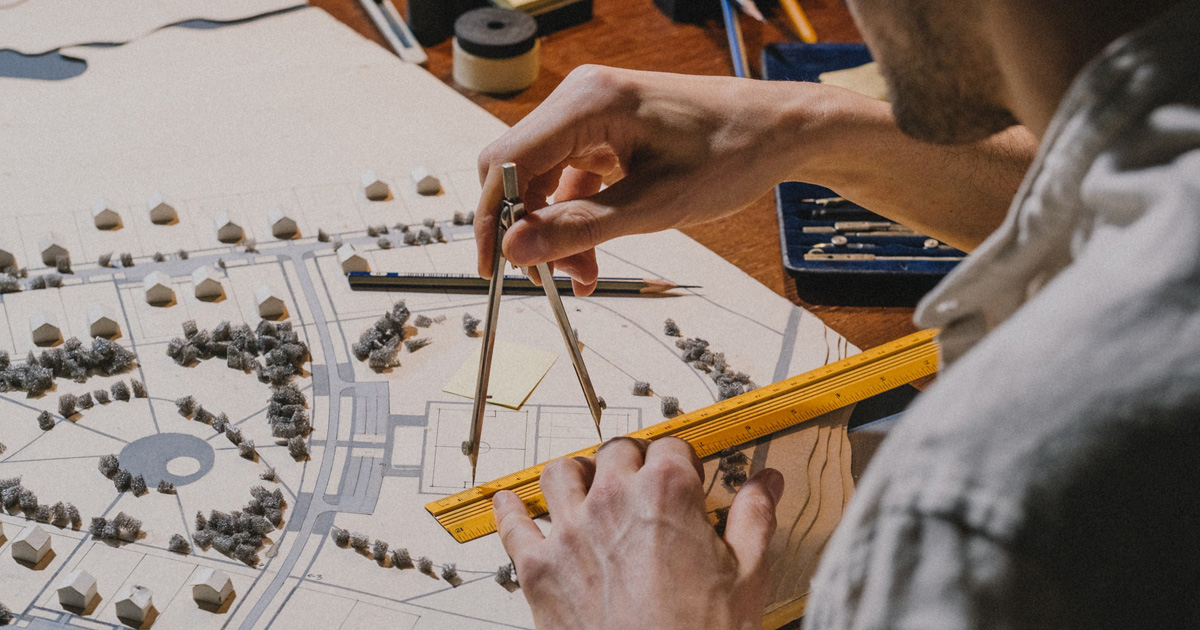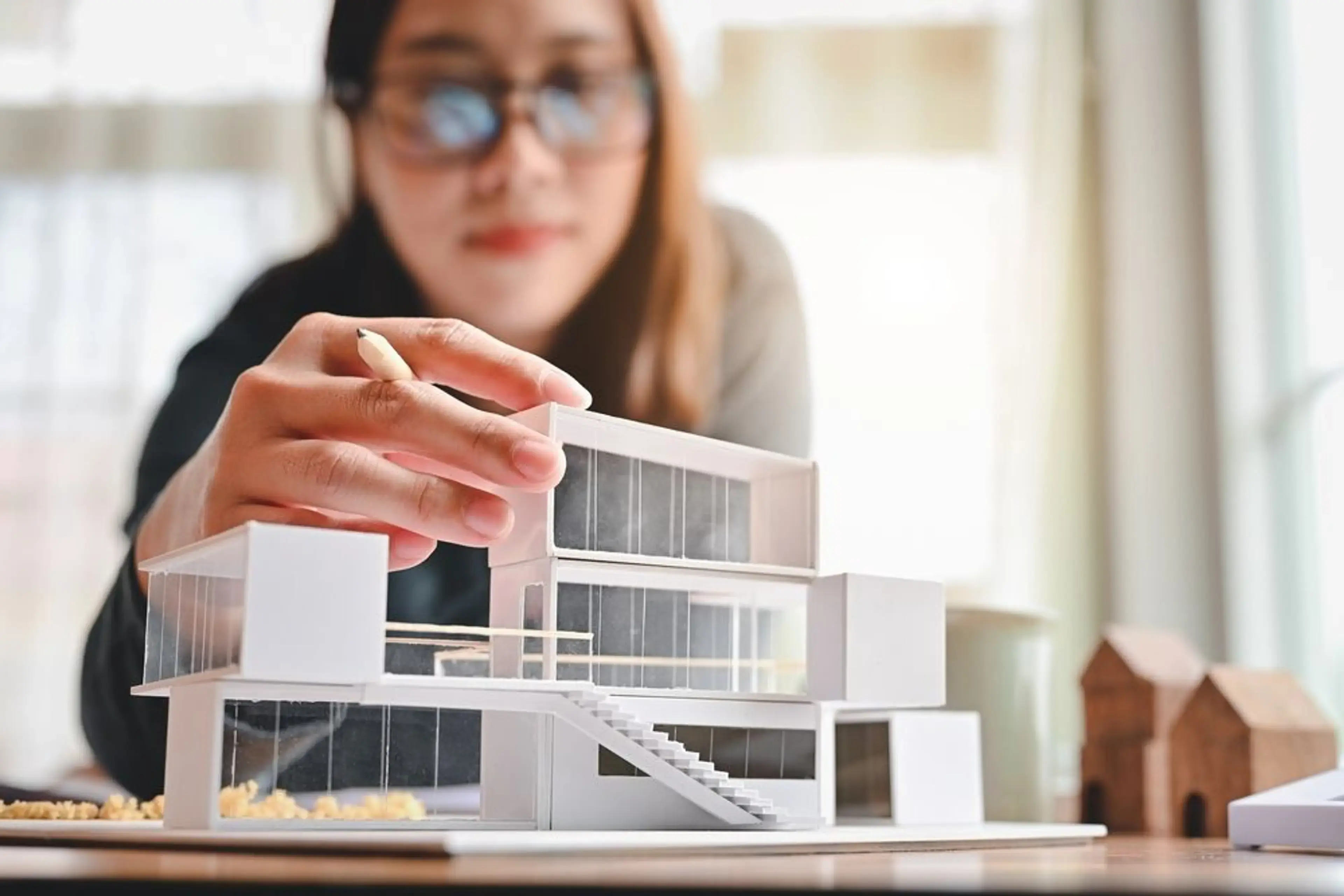Understanding the Diverse Occupation Paths Available for Aspiring Architect
As a hopeful Architect, you have a world of career paths awaiting you. Each path uses special difficulties and possibilities to apply your creativity and technological know-how. Whether you're drawn to traditional style or the subtleties of sustainable design, there's a particular niche that straightens with your rate of interests. Comprehending these varied choices can shape your professional journey, yet which instructions will you pick to explore initially?
Conventional Architecture: Designing Structures and structures
Traditional design focuses on developing structures and structures that blend capability with visual appeal. As you discover this area, you'll value the intricate balance between kind and function. You'll learn to draw motivation from historical designs, integrating elements like balance, products, and workmanship. Your designs can show cultural heritage, showcasing local practices while meeting modern-day requirements.
You'll create skills in preparing, model-making, and website analysis, enabling you to picture and communicate your concepts effectively. Engaging with clients, you'll require to recognize their vision and convert it into practical styles.
Furthermore, constructing codes and sustainability methods are necessary in your work, guaranteeing your frameworks are ecologically friendly and secure. As you grow in your career, you'll locate possibilities in domestic, industrial, or perhaps remediation tasks, each offering distinct difficulties. Embracing typical design paves the means for a satisfying job that pays homage to the past while shaping the future.
Urban Planning: Shaping Neighborhoods and Public Spaces
As an aspiring Architect, you can play a crucial role as an urban planner, transforming exactly how areas engage and operate. By using neighborhood interaction techniques, you'll assure that locals have a voice in shaping their atmosphere. And also, integrating lasting design concepts will certainly assist produce areas that not only meet today's requirements but likewise safeguard the future.
Role of Urban Planners
While several might consider designers as the single dreamers behind buildings, metropolitan organizers play an important duty fit the wider landscape of areas and public spaces. They evaluate land use, zoning regulations, and area requires to develop sustainable environments that boost quality of life. By teaming up with various stakeholders, you'll aid design parks, transportation systems, and suburbs that advertise social interaction and access. Urban organizers likewise concentrate on environmental factors to consider, making certain that advancements integrate green rooms and assistance biodiversity. Your expertise in spatial layout and area dynamics allows you to imagine future development while protecting cultural heritage. In this critical function, you'll straight affect exactly how individuals experience their environments, making every job a possibility for favorable modification.
Community Interaction Techniques
Effective area engagement strategies are vital for urban coordinators to guarantee that the voices of homeowners are heard and valued in the planning procedure. To cultivate purposeful dialogue, you must focus on open online forums and workshops where community participants can share their concepts and worries. By proactively paying attention and including feedback, you'll develop rooms that reflect the community's requirements, inevitably leading to even more effective and sustainable metropolitan environments.
Sustainable Style Concepts
When creating city rooms, incorporating sustainable style concepts is vital for creating atmospheres that prosper both ecologically and socially. Think about incorporating eco-friendly rooms, like gardens and parks, to boost biodiversity and boost air top quality.
Designing with water conservation in mind is also vital-- think of rainfall yards and permeable surfaces to take care of stormwater. Involving community members during the preparation process warranties that the spaces you create satisfy their demands and urge social interaction. By accepting these principles, you'll add to vibrant, sustainable metropolitan landscapes that profit everybody.

Landscape Style: Creating Lasting Outdoor Settings
As you check out landscape architecture, you'll find vital design concepts that produce useful and lovely outside spaces. Sustainable methods play a crucial role in ensuring these settings thrive while lessening environmental influence. And also, you'll find a selection of occupation chances that allow you to make a genuine distinction in just how people engage with nature.
Design Concepts in Landscape
Comprehending layout principles in landscape style is important for producing lasting exterior atmospheres that harmonize with nature. You'll require to contemplate components like percentage, scale, and balance to assure your designs feel natural and welcoming. Additionally, pay attention to seasonal adjustments, designing with materials that match the environments year-round.
Lasting Practices Overview
Sustainable methods in landscape architecture not just focus on appearances but likewise prioritize environmental health and wellness and resource conservation. You can make spaces that advertise soil health and wellness, such as using organic materials and exercising permaculture concepts. Ultimately, these methods guarantee your designs benefit both people and the setting for years to come.
Occupation Opportunities Exploration
With a strong structure in lasting methods, landscape style uses a variety of job courses that allow you to make a purposeful effect on the setting. You can work as a landscape developer, creating aesthetically pleasing and functional outdoor spaces, or specialize in environmental restoration, aiding to restore damaged environments. Urban organizers commonly team up with landscape designers to develop eco-friendly spaces in metropolitan settings, enhancing city livability. If you're passionate about education and learning, consider ending up being a landscape design teacher, inspiring future generations. Additionally, you may work with nonprofits concentrated on ecological sustainability or engage in research study to introduce brand-new methods. Each path not just shapes attractive settings but also promotes a much healthier earth for future generations.
Lasting Design: Concentrating On Eco-Friendly Practices
As you explore your job in design, welcoming environment-friendly methods can establish you apart in an affordable area. Sustainable layout focuses on developing structures that lessen ecological influence while boosting passenger well-being. By incorporating eco-friendly products, energy-efficient systems, and sustainable structure techniques, you'll add to a greener future.
Begin by obtaining expertise of environment-friendly accreditations like LEED or BREEAM, which can strengthen your credentials. Think about just how all-natural light, ventilation, and thermal performance can optimize layout. Team up with engineers and environmental consultants to introduce remedies that lower waste and save resources.
Do not forget the significance of community involvement-- appealing regional stakeholders can inspire styles that balance with the atmosphere. As customers significantly focus on sustainability, your knowledge in environmentally friendly techniques will not just bring in jobs yet also satisfy your passion for responsible design. Embrace this crucial element of the career, and view your profession grow.
Historic Preservation: Shielding and Bring Back Cultural Heritage
While you commence on your building trip, think about the important role of historic conservation in preserving our social heritage. This area focuses on the go protection and restoration of significant buildings, sites, and frameworks that inform the tales of our past. By taking part in historic conservation, you'll assist secure the building legacy that forms area identity.
As a historic conservation Architect, you'll evaluate historical value and analyze the condition of structures. You'll work carefully with historians and guardians to guarantee genuine reconstruction techniques are used. This career course allows you to blend creative thinking with research, enabling you to create options that value original products and workmanship.
Your work not just adds to sustainability by recycling existing structures however likewise fosters a feeling of satisfaction within communities. Accepting this course will certainly assist you become a guardian of background, preserving the tales and looks that enrich our lives.
Interior Design: Enhancing Indoor Spaces
Historic conservation and indoor style both share a dedication to boosting the constructed environment, however they concentrate on various aspects. While historical preservation stresses keeping a structure's social and historical value, indoor style absolutely nos in on maximizing interior rooms for capability and visual appeals.
As a hopeful Architect, you'll find that interior architecture permits you to mix creativity with technical skills. You'll create areas that not just look good however additionally advertise comfort and effectiveness. This area includes comprehending exactly how light, color, and products engage within a room, influencing state of mind and use.
You'll service various tasks, from household homes to commercial workplaces, ensuring that each environment meets the demands of its residents. By prioritizing user experience, you can transform insides into useful and inspiring rooms, making a substantial influence on exactly how people communicate with their surroundings. Welcome the opportunity to improve indoor environments and shape the method individuals live and function.
Industrial Style: Merging Functionality With Aesthetics
Industrial layout plays an important role in producing items that effortlessly blend aesthetic appeals with capability, making sure that what you make use of day-to-day is not only visually attractive yet likewise practical. home As an aspiring Architect, you could involve yourself in this area, concentrating on designing everything from furniture to consumer electronic devices. Your job entails understanding customer requirements, products, and manufacturing processes, allowing you to develop ingenious solutions that enhance everyday experiences.
In industrial design, you'll commonly work together with engineers, producers, and marketing experts, ensuring that your designs are not just attractive but also practical. This career path provides a vibrant atmosphere where creativity fulfills usefulness, making it a satisfying choice for designers interested in forming the products of tomorrow.
Often Asked Questions
What Educational Certifications Do I Need to End Up Being a Designer?
To end up being an architect, you'll need a specialist degree in design, usually a Bachelor's or Master's. Furthermore, you'll need to finish an internship and pass the Architect Registration Examination to exercise lawfully.
Are There Certification Demands for Various Building Job Paths?
Yes, there're qualification requirements for numerous architectural paths. Architect. You'll require to pass examinations, complete internships, and in some cases go after specialized training, relying on your picked emphasis, like landscape style, city layout, or historical conservation
What Software Program Abilities Are Important for Designers Today?

Just How Can I Gain Practical Experience While Studying Style?
You can gain sensible experience by interning at architectural firms, taking part in style competitions, volunteering for neighborhood projects, or working together with classmates on real-world projects. These chances boost your skills and construct useful connections in the sector.
What Task Opportunities Exist Outdoors Standard Style Firms?
You can explore numerous work possibilities outside typical style firms, like city preparation, interior decoration, landscape design, building management, realty growth, and even duties in sustainability consulting. Each offers special challenges and rewards.
Whether you're attracted to typical architecture or the subtleties of lasting style, there's a specific niche that lines up with your rate of interests.When developing urban rooms, incorporating sustainable style principles is essential for producing environments that flourish both environmentally and socially.As you discover landscape style, you'll discover essential design concepts that produce beautiful and useful exterior rooms.Comprehending layout principles in landscape style is important for developing sustainable outdoor environments that harmonize with nature.In industrial style, you'll typically work together with designers, suppliers, and marketing professionals, making certain that your layouts are not only stunning yet also viable.